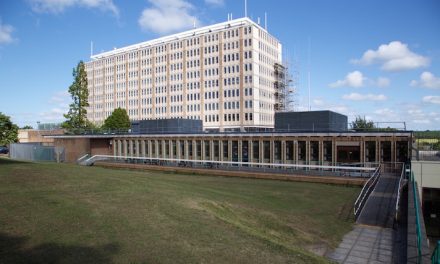Clive Lewis MP has reacted to analysis that quantifies overcrowding in primary schools in the region and across the country. This analysis reveals:
-
Nationwide, over half a million children are taught in super-size classes in primary school, as class-sizes continue to rise.
-
In Norfolk, 6,037 primary pupils are in classes of 31-35 pupils.
-
244 primary pupils in Norfolk are in classes of over 36 pupils and it’s estimated that, of these, 53 are in a class of over 40 students.
-
In the East of England, 47,609 primary pupils are in classes of 31-35 pupils.
-
2659 primary pupils in the East of England are in classes of over 36 pupils and it’s estimated that, of these, 1544 are in classes of over 40 students.
Commenting on the figures Clive Lewis says:
“These figures show the real impact seven years of Tory Government has had on our schools and our children’s education.
Schools are facing real terms cuts for the first time in decades, and are continually being expected to do more with less. With less money available for teaching staff, that includes teachers having to split their attention more ways between more students in a class. This situation is unsustainable and is clearly not a good environment for young students to learn in.
A Labour Government would eliminate super-sized classes by capping primary school groups at 30 pupils. As all of the evidence shows, this would make great strides towards making sure every student has the best possible chance of receiving the quality education they deserve.”
Clive Lewis has given Norwich Eye a detailed analysis of the current situation in our classrooms. We present this data and references in full below.
- The Conservatives came to power in 2010 claiming they would create smaller class sizes.
“A Conservative government will give many more children access to the kind of education that is currently only available to the well-off: safe classrooms, talented and specialist teachers, access to the best curriculum and exams, and smaller schools with smaller class sizes with teachers who know the children’s names.”
Conservative Party Manifesto 2010, p. 51
“The more we can get class sizes down the better”.
David Cameron, Yorkshire Post, 17 April 2008
- Theresa May has previously said that large class sizes indicated that a school was reaching “crisis point”.
“Schools have reached crisis point, with teacher shortages, classes being sent home early, increasing class sizes, unqualified staff, non-specialist staff and standards falling.”
Theresa May, Hansard, 18 January 2001
- Yet new analysis of Department of Education figures reveals that over half a million children are now in super-size classes in primary school, as class-sizes continue to rise. Of these, some 40,000 primary pupils are in classes of over 36 pupils and over 16,000 are now in class sizes of at least 40. This category includes class sizes of over 50, 60 and 70.
| Class size X in state funded primary schools | |||||
| 31 to 35 | 36+ | 40+ | Total 31+ | ||
| 2014 | number of pupils in classes of X taught by one teacher | 460,563 | 39,951 | 14,671 | 500,514 |
| 2015 | 481,885 | 38,560 | 14,824 | 520,445 | |
| 2016 | 498,152 | 40,102 | 16,655 | 538,254 | |
| 2017 | 503,591 | 39,088 | 16,571 | 542,679 | |
Sources: Figures from the underlying datasets – DfE, Schools, pupils and their characteristics: January 2017, January 2016, January 2015 and January 2014, published 11 June 2015, 12 June 2014, 28 June 2016 and 29 June 2017,https://www.gov.uk/government/collections/statistics-school-and-pupil-numbers (NB: Where data has been recorded for more than one large class, an average has been assumed. For example, if the data recorded a school as having two classes of 36 or more pupils, with 80 pupils across these classes, then 80 has been added to the 40+ class size group.
- These classes do not include unusual situations like collapsed lessons or assemblies. They reflect ‘normal’ class situations, taught by one teacher as defined by the Department for Education.
“Where the selected time is not appropriate to the school timetable (for example, if the selected time is when the whole school or a large proportion of the school is in an assembly with the head teacher) schools should choose an hour / period that reflects a ‘normal’ class situation that applies at the selected time eachThursday of the term (see paragraph 2.1). Do not record unusual situations (such as class amalgamation or school closure) which may have occurred on census day due, for example, to staff training or absence, severe weather conditions or religious observances.”
Department for Education, School Census 2015 to 2016, Guide, version 2.5 – https://www.gov.uk/government/uploads/system/uploads/attachment_data/file/495464/2015_to_2016_School_Census_Guide_V_2_5.pdf
- The mounting pressure on school places is now starting to hit secondary schools, with figures showing an increase in the number of pupils in very large classes in the last year.
| Class size X in state funded secondary schools | ||||
| 31 to 35 | 36+ | Total 31+ | ||
| 2014 | number of pupils in classes of X taught by one teacher | 264,453 | 14,460 | 278,913 |
| 2015 | 264,603 | 16,909 | 281,512 | |
| 2016 | 286,610 | 18,081 | 304,691 | |
| 2017 | 321,963 | 21,057 | 343,020 | |
Sources: Figures from the underlying datasets – DfE, Schools, pupils and their characteristics: January 2017, January 2016, January 2015 and January 2014, published 11 June 2015, 12 June 2014, 28 June 2016 and 29 June 2017,https://www.gov.uk/government/collections/statistics-school-and-pupil-numbers
- The regional breakdown for primary schools is as follows.
| 2017 | ||||
| Class size X in state funded primary schools | ||||
| number of pupils in classes of X taught by one teacher | 31 to 35 | 36+ | 40+ | Total 31+ |
| EAST MIDLANDS | 49,179 | 3797 | 1164 | 52,976 |
| EAST OF ENGLAND | 47,609 | 2659 | 1544 | 50,268 |
| LONDON | 38,273 | 5524 | 2524 | 43,797 |
| NORTH EAST | 17,985 | 2527 | 753 | 20,512 |
| NORTH WEST | 85,289 | 6760 | 2559 | 92,049 |
| SOUTH EAST | 92,657 | 3814 | 1967 | 96,471 |
| SOUTH WEST | 48,514 | 2934 | 1295 | 51,448 |
| WEST MIDLANDS | 61,102 | 5241 | 2199 | 66,343 |
| YORKSHIRE & HUMBER | 62,983 | 5832 | 2566 | 68,815 |
| ENGLAND | 503,591 | 39,088 | 16,571 | 542,679 |
Sources: Figures from the underlying datasets – DfE, Schools, pupils and their characteristics: January 2016, 28 June 2016,https://www.gov.uk/government/statistics/schools-pupils-and-their-characteristics-january-2016 (NB: Where data has been recorded for more than one large class, an average has been assumed. For example, if the data recorded a school as having two classes of 36 or more pupils, with 80 pupils across these classes, then 80 has been added to the 40+ class size group).
| Jan-10 | Jan-17 | % change since 2010 | |
| Number of infants taught in classes of over 30 | 31,265 | 91,527 | 192 |
Sources: DfE, Schools, pupils and their characteristics: January 2010, 13 May 2010
https://www.gov.uk/government/statistics/schools-pupils-and-their-characteristics-january-2010
DfE, Schools, pupils and their characteristics: January 2017, 29 June 2017, https://www.gov.uk/government/statistics/schools-pupils-and-their-characteristics-january-2017#content
- The Public Accounts Committee recently published a report into the financial sustainability of schools, concluding that due to government cuts to per pupil spending, schools will be forced to expand classes further in order to make efficiency savings.
“The Department for Education does not have the necessary arrangements in place to identify, and therefore act, if the actions schools take to make efficiency savings threaten the quality of education and educational outcomes.”
“To reduce staff costs, schools are likely to increase teachers’ contact time and class sizes, rely more on unqualified staff and staff teaching outside of their specialism, and require head teachers and other senior staff to do more teaching.”
Financial Sustainability of Schools, House of Commons Committee of Public Accounts, 22 March 2017,https://www.publications.parliament.uk/pa/cm201617/cmselect/cmpubacc/890/890.pdf
- In March the school leaders union ASCL published a survey of 1000 school leaders who reported expanded class sizes as a direct result of school budget cuts. The unions, ATL and NUT have also carried out a similar survey, finding that many school leaders have already been forced to expand classes in the last year.
“Of more than 1,000 school leaders who responded to a survey by the Association of School and College Leaders, more than four fifths said they had increased class sizes over the past year as a direct result of cost pressures.”
Schools Week, 10 March 2017, http://schoolsweek.co.uk/class-sizes-pushing-40-as-cuts-bite-union-claims/
“Of almost 1,200 teachers who responded, 76 per cent said their school’s budget had been cut this year, while 93 per cent are pessimistic about funding in the coming years.
“Half of all respondents said their schools have bigger class sizes this year, rising to 70 per cent when just secondary teachers’ responses are counted.”
Schools Week, 10 April 2017, http://schoolsweek.co.uk/schools-cut-books-and-send-spending-as-funding-pressures-bite/






Recent Comments